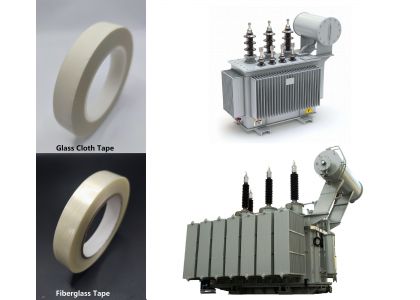
When it comes to maintaining the functionality and safety of power transformers, the selection of appropriate insulation materials is crucial. Among the most frequently utilized options are glass cloth electrical tape and fiberglass tape, both known for their high thermal resistance and electrical insulating properties. However, despite their apparent similarities, these two types of tape exhibit distinct characteristics and applications that play a significant role in their effectiveness within transformer insulation systems.
Conversely, fiberglass tape is generally manufactured from non-woven fiberglass and is typically devoid of adhesive backing. This type of tape is designed primarily for binding and reinforcing rather than adhering to surfaces. Fiberglass tape is often used in conjunction with other insulating materials and may be treated with resins or other compounds to enhance its insulation properties. This fundamental distinction shapes the applications of each type of tape in power transformers.
In contrast, while fiberglass tape also offers commendable insulation properties, it is more valued for its mechanical strength than its electrical characteristics. It serves as a reinforcement or bundling material for multiple transformer components, including windings and cables. Fiberglass tape can enhance its effectiveness when combined with insulating varnishes or resins, which bolster its overall insulation performance.
On the other hand, fiberglass tape plays a significant role during various assembly stages of a transformer. It is employed to reinforce components that experience high stress or temperature variations. Often, fiberglass tape is utilized alongside other materials to create a composite insulation system that effectively manages thermal and electrical performance. Its flexibility and resilience make it an excellent option for binding multiple layers of insulation together, adding to the overall robustness of the design.
Beyond glass cloth electrical tape and fiberglass tape, various other insulating tapes are available for transformer applications, including polyester tape and mineral-insulated paper tape. Each of these solutions offers unique properties tailored to specific operational requirements. While polyester tape provides excellent moisture resistance, mineral-insulated paper tape boasts high thermal stability, ensuring safe operation even under extreme conditions.
Enhancing Transformer Reliability
Ultimately, the choice between various insulating tapes—including glass cloth tape high temperature options, fiberglass variants, and others—must be made carefully to ensure optimal performance of power transformers. Understanding the intended use and specific properties of each type of tape not only enhances operational efficiency but also contributes significantly to the longevity and safety of transformer systems.
Electrical engineers and maintenance professionals must be aware of these distinctions to select the appropriate materials for specific tasks. By choosing the right type of tape, they can improve both the reliability and efficiency of power transformers in the field, ensuring that they operate at peak performance while minimizing risks associated with electrical insulation failures.
In conclusion, the variety of available insulating tapes, including glass cloth electrical tape, fiberglass tape, and additional options, plays a pivotal role in transformer maintenance. Selectively utilizing these materials based on their distinct characteristics enhances the performance and reliability of power transformers, paving the way for safer and more efficient operation.